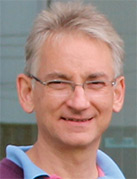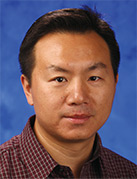Dr Jee Hyun Kim
Developmental Psychobiology Laboratory — Behavioural Neuroscience
The Florey Institute of Neuroscience and Mental Health
Plenary Lectures
- Memory and motivation to cure anxiety and addiction
– Dr Jee Hyun Kim - Leukaemia and the quality control of ribosome assembly
– Professor Alan J Warren - Genomic variations and its implications in cancer genomes
– Dr Feng Yue
Memory and motivation to cure anxiety and addiction

Dr Jee Hyun Kim graduated from the University of New South Wales (UNSW) in Australia with the prestigious University Medal in Psychology. In 2008 she completed her PhD at UNSW on the development of memory using rodent models, and was awarded the Australian Psychological Society Award for Excellent PhD Thesis in Psychology. After a postdoctoral fellowship at Michigan University (Ann Arbor, USA), she became the Head of Developmental Psychobiology laboratory at the Florey Institute of Neuroscience and Mental Health/University of Melbourne in 2013. She has received numerous international and national awards including International Society for Developmental Psychobiology Kucharski Young Investigator Award, and Australian Psychological Society Early Career Research Award, The International College of Neuropsychopharmacology Rafaelson Young Investigator Award. She has 52 publications and 1400+ citations. Her team works on memory and forgetting across one’s lifetime, demonstrating that emotional memories are regulated differently depending on one’s age. This work has major implications for anxiety and addiction treatments, especially early in life. She has been invited to give a TEDxMelbourne talk on this topic, which has now reached +660,000 views (https://www.youtube.com/watch?v=W_t9O5MgisM).
Abstract
My vision is to discover the role of memory across the lifetime in mental disorders, namely anxiety and substance abuse. I believe the key to finding effective treatments lies in how we remember and forget emotionally significant events during our development. This is because the vast majority of anxiety disorders and substance abuse have an onset during childhood or adolescence. We use various rodent models that closely resemble human behaviours, and manipulate them using different drugs, viruses, and cognitive-behavioural approaches to find potential therapeutics. We discovered that behavioural training that normally reduces anxiety and drug seeking in adult rodents are not effective during adolescence. We have translated some of our findings in humans and we are now investigating how to reverse such impairments by manipulating the neuropharmacological basis of adolescent vulnerability in anxiety and addiction.
Leukaemia and the quality control of ribosome assembly

Professor Alan J Warren
Department of Haematology
University of Cambridge
Alan Warren graduated in Biochemistry (1983) and Medicine (1986) from the University of Glasgow and trained in Haematology at the Hammersmith Hospital in London and in Cambridge. He gained his PhD in molecular biology at the MRC Laboratory of Molecular Biology (LMB) in Cambridge (supervisor Terry Rabbitts, FRS) where he discovered that the leukaemia-associated LIM-only protein Lmo2 is essential for haematopoiesis. He was appointed Professor of Haematology in 2003. The Warren laboratory aims to elucidate basic mechanisms of eukaryotic ribosome assembly to better understand how corruption of this process causes stem cell subversion and cancer. He was elected Fellow of the Academy of Medical Sciences in 2005 and received a FEBS National Lecture Award from the Austrian Society for Molecular Biology and Biotechnology in September 2016.
Abstract
The synthesis of new ribosomes is a fundamental conserved process in all cells. Ribosomes are pre-assembled in the nucleus and exported to the cytoplasm, where they acquire functionality through a series of final maturation steps that include the formation of the catalytic centre, recruitment of the last remaining ribosomal proteins and the removal of inhibitory assembly factors. A major surprise in the last few years has been the identification of mutations in key ribosome assembly factors in both inherited and sporadic forms of leukaemia. In particular, biallelic mutations in the SBDS gene cause Shwachman-Diamond syndrome, a recessive bone marrow failure disorder associated with significant predisposition to acute myeloid leukaemia. By studying the pathogenesis of this rare disease, we have uncovered an elegant mechanism that couples the final step in maturation of the large ribosomal subunit to a quality control assessment of the structural integrity of the active sites of the ribosome.
Genomic variations and its implications in cancer genomes

Department of Biochemistry and Molecular Biology
School of Medicine
Pennsylvannia State University
Dr Feng Yue is an assistant professor in the Department of Biochemistry and Molecular Biology at Penn State School of Medicine, and also serves as the Director of Bioinformatics Division for the Penn State Institute for Personalized Medicine. He has been an active member of several large NIH funded consortia, including the ENCODE, Roadmap/Epigenomics, and 4D Nucleome projects.
He co-led the overall analysis effort for the mouse ENCODE consortium (Yue et al. Nature 2014). He was also a key contributor to the discovery of topologically associated domains (TADs, Dixon et al. Nature 2012). As a member of the 4D Nucleome consortium, he is working on integrative analyses and developing quality metrics for chromatin interaction datasets. His group built the highly popular 3D genome browser (http://3dgenome.org/), which has been visited by more than 40,000 users from over 100 countries.
His long-term goal is to study genomic/epigenomic regulation and 3D genome organization in human diseases, using a combination of high throughput experiments, computational modeling, and functional assays.
Abstract
In this work, we present an integrative framework for comprehensively identifying structural variation and investigating their effect on 3D genome structure. For the first time, we apply next-generation optical mapping, high-throughput chromosome conformation capture (Hi-C) techniques, and whole genome sequencing to detect SVs in up to 29 of normal and cancer cells. With this list of high-confidence SVs, we study their impact on genome organization, including the formation of novel topological associating domains (TADs) and enhancer hijacking events. Furthermore, we observe the disruption of TADs in cancer genomes is associated with changes in the gene expression, including many essential oncogenes. Our results underscore the importance of comprehensive structural variant identification and indicate that non-coding structural variation may be an underappreciated mutational process in cancer genomes.


